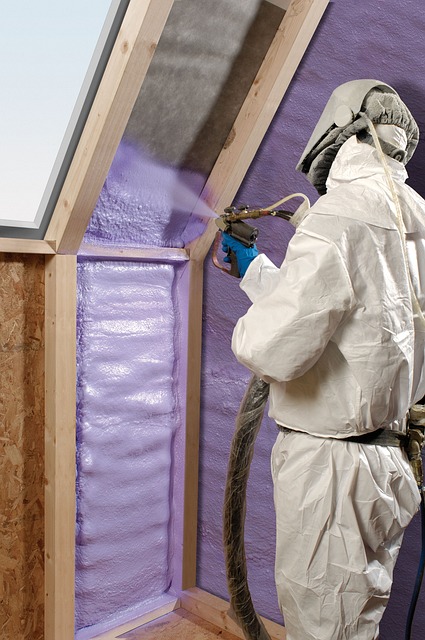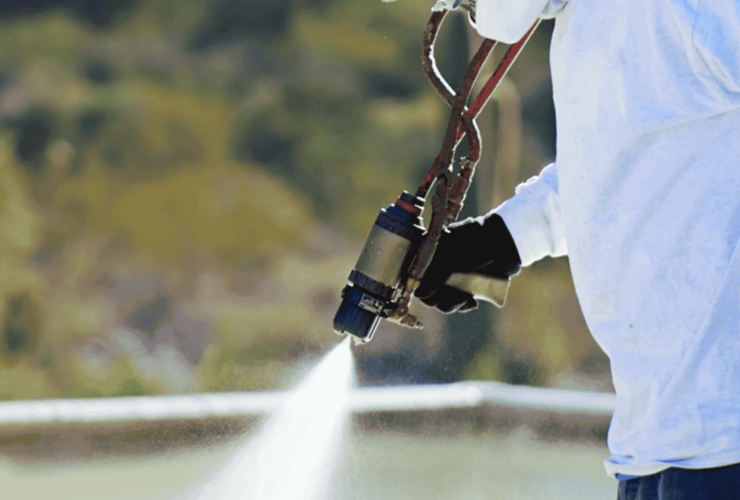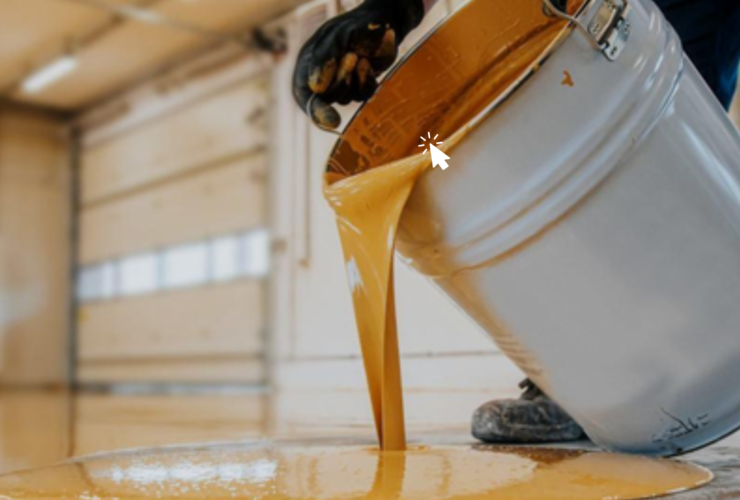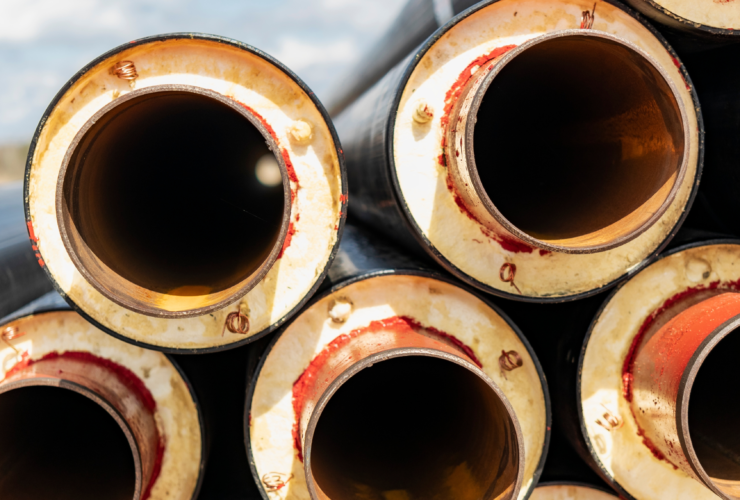Polyurethane insulation is a type of insulation material that is becoming increasingly popular in the construction industry. Unlike traditional insulation materials like fiberglass , mineral wool, XPS or EPS, polyurethane insulation is a spray foam or rigid board foam insulation made from a combination of polyol and isocyanate compounds. When combined, these compounds react and expand, creating a dense, rigid foam that provides excellent insulation properties.
For more information about Polyurethane: What is Polyurethane ?
How does it compare to traditional insulation materials?
Polyurethane insulation offers several advantages over traditional insulation materials. Firstly, it has a higher R-value per inch of thickness, which means it provides better thermal resistance and insulation performance. Additionally, due to its ability to prevent air infiltration and eliminate air gaps, polyurethane foam insulation is much more effective than traditional insulation materials. It has a longer lifespan and is more resistant to moisture, mold, and pests.
Is polyurethane spray foam or rigid board insulation a better choice for me?
The choice between polyurethane spray foam and rigid board insulation depends on your specific needs and application. Spray foam insulation is applied as a liquid that expands and hardens, making it an excellent choice for insulating hard-to-reach areas, irregular shapes, and tight spaces. It provides a seamless barrier and can effectively seal air leaks. On the other hand, rigid board insulation is pre-formed and can be easily cut and installed in larger open areas, such as walls or roofs. It offers superior compressive strength and can be used in both residential and commercial applications.
Advantages of Polyurethane Insulation: Is It Worth the Hype?

What are the key benefits of using polyurethane insulation?
Polyurethane insulation offers several key benefits that make it a popular choice among homeowners and builders:
- Superior Thermal Resistance: Polyurethane insulation has a higher R-value per inch of thickness compared to traditional insulation materials, providing better thermal resistance and energy efficiency.
- Airtightness: The seamless and airtight nature of polyurethane insulation prevents air leaks, which can compromise the effectiveness of traditional insulation materials.
- Moisture Resistance: Polyurethane insulation is resistant to moisture, mold, and mildew, making it a durable choice for humid or damp environments.
- Structural Strength: Rigid board polyurethane insulation offers excellent compressive strength, making it suitable for applications where structural integrity is important.
Does it offer superior thermal resistance compared to other options?
Understanding the Applications: Where Can Polyurethane Insulation Be Used?
Is polyurethane suitable for insulating attics, walls, or crawl spaces?
Polyurethane insulation is versatile and can be used for insulating various areas of a home or building, including:
- Attics: Polyurethane spray foam insulation is an excellent choice for insulating attic spaces, as it can effectively seal air leaks and provide a seamless barrier against heat transfer.
- Walls: Both spray foam and rigid board polyurethane insulation can be used for insulating exterior walls, interior walls, and even cavity walls.
- Crawl Spaces: The moisture resistance and air-sealing properties of polyurethane insulation make it a suitable choice for insulating crawl spaces, where moisture and air leaks can be problematic.
Can it be used for specific applications like roofs or foundations?
Yes, polyurethane insulation can be used for specific applications like roofs and foundations:
- Roofs: Rigid board polyurethane insulation is often used as part of a roofing system, providing insulation and structural support.
- Foundations: Polyurethane spray foam insulation can be used to insulate and seal foundations, basements, and crawl spaces, preventing moisture intrusion and improving energy efficiency.
Are there safety considerations when working with polyurethane insulation?
Yes, there are several safety considerations to keep in mind when working with polyurethane insulation, particularly for spray foam applications:
- Respiratory Protection: Polyurethane insulation can release harmful fumes and vapors during installation. Proper respiratory protection, such as a full-face respirator, is essential.
- Eye and Skin Protection: The chemicals used in polyurethane insulation can cause skin and eye irritation. Wearing protective clothing, gloves, and goggles is recommended.
- Ventilation: Adequate ventilation is crucial when working with polyurethane insulation to prevent the buildup of fumes and ensure proper curing of the foam.
- Fire Safety: Polyurethane insulation is combustible, and appropriate fire safety measures should be taken during installation and curing.
What are the benefits of hiring a professional installer?
While it is possible to install polyurethane insulation as a DIY project, hiring a professional installer can offer several benefits:
- Proper Training and Experience: Professional installers have the necessary training, experience, and equipment to handle polyurethane insulation safely and effectively.
- Safety Compliance: Professional installers follow strict safety protocols and regulations to ensure the protection of themselves and the occupants of the building.
- Warranty and Quality Assurance: Most professional installers offer warranties and quality assurance on their work, providing peace of mind and protection for your investment.
- Efficient Installation: Experienced professionals can typically complete the installation process more efficiently and with fewer mistakes, saving time and minimizing potential issues.
What factors influence the cost of polyurethane insulation installation?
The cost of polyurethane insulation installation can vary depending on several factors:
- Type of Insulation: Spray foam insulation is generally more expensive than rigid board insulation.
- Project Size and Complexity: Larger projects and those with complex geometries or hard-to-reach areas will typically cost more.
- Location: Labor and material costs can vary depending on your geographical location.
- Existing Insulation: If you need to remove existing insulation before installation, this can add to the overall cost.
- Professional vs. DIY Installation: Hiring a professional installer will increase the cost but can ensure a proper and safe installation.
Is the initial investment justified by the long-term energy savings?
While the initial investment in polyurethane insulation can be higher than traditional insulation materials, the long-term energy savings can potentially justify the cost. The superior thermal resistance and airtightness of polyurethane insulation can lead to significant reductions in heating and cooling costs over time. Additionally, the durability and long lifespan of polyurethane insulation can make it a worthwhile investment for many homeowners and builders.
Are there any environmental concerns associated with polyurethane insulation?
While polyurethane insulation offers excellent insulation properties and energy efficiency, there are some environmental concerns to consider:
- Production Process: The production of polyurethane insulation involves the use of chemicals and compounds that can have environmental impacts.
- Disposal and Recycling: Polyurethane insulation can be challenging to recycle or dispose of properly, potentially contributing to waste and pollution.
- Off-gassing: Some polyurethane insulation products may release volatile organic compounds (VOCs) during installation and curing, which can contribute to indoor air pollution.
How does it compare to the sustainability of other insulation materials?
Compared to traditional insulation materials like fiberglass or cellulose, polyurethane insulation has a larger environmental footprint during production. However, its superior insulation performance and energy efficiency can help offset some of these impacts over its lifespan by reducing energy consumption and associated greenhouse gas emissions.
Some manufacturers are also working on developing more environmentally friendly and sustainable polyurethane insulation products by using renewable or recycled materials and reducing the use of harmful chemicals.
Does polyurethane insulation pose any health risks during or after installation?
While polyurethane insulation is generally considered safe when installed properly, there are some potential health risks to consider:
- Installation Safety: During installation, especially with spray foam insulation, there can be risks associated with exposure to the chemicals used in the insulation. Proper safety equipment, such as respirators and protective clothing, should be worn to minimize exposure.
- Off-gassing: Some polyurethane insulation products may release volatile organic compounds (VOCs) during and after installation, which can contribute to indoor air pollution. This can be a concern for individuals with respiratory issues or chemical sensitivities.
- Combustibility: Polyurethane insulation is combustible, and proper fire safety measures should be taken during installation and in the event of a fire.
What safety precautions should be taken when working with this material?
To ensure the safe handling and installation of polyurethane insulation, the following safety precautions should be taken:
- Ventilation: Adequate ventilation should be provided during and after installation to allow for proper curing and to minimize the buildup of fumes or off-gassing.
- Personal Protective Equipment (PPE): Installers should wear appropriate PPE, including respirators, goggles, gloves, and protective clothing, to minimize exposure to chemicals and potential irritants.
- Fire Safety: Proper fire safety measures should be in place, such as having fire extinguishers readily available and following appropriate curing times and temperature guidelines.
- Occupant Safety: If the installation is occurring in an occupied space, occupants should be advised to vacate the area during installation and for a period after, as recommended by the manufacturer, to allow for proper curing and off-gassing.
- Manufacturer Guidelines: It is essential to follow the manufacturer’s guidelines and instructions for safe handling, installation, and disposal of polyurethane insulation products.
Is polyurethane insulation a long-term investment for my home?
Yes, polyurethane insulation is generally considered a long-term investment for homes and buildings. Unlike some traditional insulation materials that can settle or degrade over time, polyurethane insulation is known for its durability and longevity.
Spray foam insulation, in particular, can last for the lifetime of a building when installed correctly, as it forms a seamless, monolithic barrier that does not compress or settle. Rigid board insulation is also highly durable and can maintain its insulation performance for decades.
How does it compare to the lifespan of other insulation materials?
Polyurethane insulation typically has a longer lifespan compared to many other insulation materials:
- Fiberglass Insulation: Fiberglass insulation can last 15-20 years, but its effectiveness can diminish over time due to settling and compression.
- Cellulose Insulation: Cellulose insulation has a lifespan of around 20-30 years but can be prone to moisture damage and compaction.
- Mineral Wool Insulation: Mineral wool insulation can last 50 years or more if protected from moisture and physical damage.
In comparison, polyurethane insulation, when installed properly and protected from physical damage, can maintain its insulation performance and structural integrity for the lifetime of the building, which can be 50 years or more.
What are some alternative insulation materials I should consider?
While polyurethane insulation offers many advantages, there are several alternative insulation materials that may be suitable depending on your specific needs and preferences:
- Fiberglass Insulation: Fiberglass insulation is a traditional and widely available option that is relatively inexpensive and easy to install. However, it has a lower R-value than polyurethane and can settle over time.
- Cellulose Insulation: Cellulose insulation is made from recycled materials and has good insulation properties. It is a more environmentally friendly option but can be prone to moisture damage and settling.
- Mineral Wool Insulation: Mineral wool insulation is made from natural materials and offers excellent fire resistance and sound insulation. It is durable but can be more expensive than other options.
- Rigid Foam Insulation (XPS or EPS): Extruded polystyrene (XPS) and expanded polystyrene (EPS) are rigid foam insulation materials that offer good insulation performance and moisture resistance, but may have a lower R-value than polyurethane.
- Spray Foam Insulation (Open-Cell or Closed-Cell): While polyurethane is a type of closed-cell spray foam insulation, there are also open-cell spray foam insulations made from different materials that may be suitable alternatives.
When might another type of insulation be a better choice for my needs?
While polyurethane insulation is an excellent choice for many applications, there may be situations where another type of insulation is more suitable:
- Budget Constraints: If your budget is limited, fiberglass or cellulose insulation may be more affordable options, although they may not offer the same level of performance as polyurethane.
- Environmental Concerns: If you prioritize using more environmentally friendly materials, cellulose or mineral wool insulation may be better choices.
- Specific Applications: For applications that require exceptional fire resistance or sound insulation, mineral wool insulation may be the preferred option.
- Existing Insulation: If you are adding insulation to an existing structure with limited space, a more flexible or lower-density insulation material may be more suitable.







